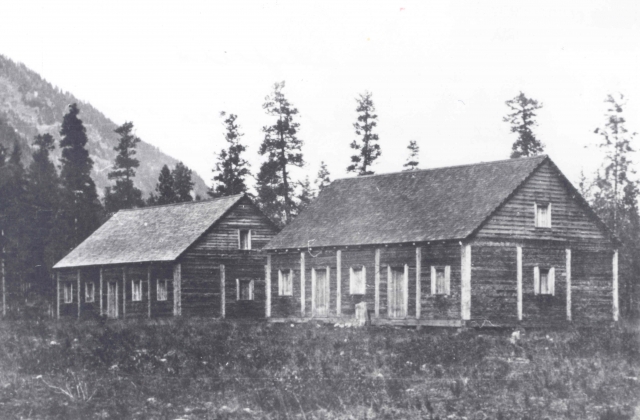Museum event explores the big role played by a little fort in our nation's history
Often when we look at the history of the Rossland-Trail area, we start with the discovery of gold. If we’re talking about Rossland and Trail the cities, that’s largely correct. Earlier on, however, this area played a key role in the establishment of the current Canadian/American border being situated on the 49th parallel. On Thursday, June 16th the Rossland Museum will be hosting the first event in its new live speaker series, put on by the Trail Historical Society. This event will delve into the little-known history of Fort Shepherd.
In the fort’s short time operating across from the confluence of the Pend d’Oreille and Columbia Rivers it had a significant impact on this nation’s history.
In the mid 1800s, when the West was still wild, the race was on for control of the land and resources within. American and British expeditions, including Lewis and Clark on the US side and David Thompson on the British, set out to gain control over the lucrative fur trade.
Fort Shepherd’s initial incarnation was called Fort Colvile (with one ‘l’, not the present two) and located not too far south of the current border, sat in the midst of the conflict. The battles for control over the land were largely centered on gaining control of the taxes and duty made off the fur trade.
The desires of the British-controlled Northwest Company and Britain itself differed greatly over how to deal with establishing the American border. The Northwest Company wished for the Columbia River to determine the boundary which would have put much of modern Washington and Oregon in Canada.
The British, hoping to avoid a war, ultimately let go of the area, much to the chagrin of the Northwest Company.
With the treaty of Washington establishing the 49th parallel as the boundary in 1846, Fort Colvile, a Hudson’s Bay Company trading post, was left stranded on the American side and faced with paying US taxes and duty. To avoid the taxes the post needed to be moved north.
Taking advantage of a strategic location near the Columbia and Pend d’Oreille, right along the recently-constructed Dewdney Trail, Fort Shepherd was built in 1856. Its original name was Fort Pend d’Oreille, but that was quickly changed to Fort Shepherd in honour of the Hudson’s Bay Company’s then-current governor.
The bustling little fort didn’t last long. It closed four years later in 1860, before being re-established in 1864 for just two more years. Then, after a couple of years of disuse, the fort burned to the ground in 1870.
Presently the site is owned by the Land Conservancy of Canada in large part to protect the unique biodiversity of its ecosystem. Depressions in the earth on the site can still be seen from the former fort, camp and trading post and some remnants of the foundations also still remain. Members of the Trail Historical Society sit on the steering committee for the site today and are working with the group in hopes of establishing some signage on the site to demarcate the site of the small, short lived but immensely historical fort.
For the full story on the little fort with big implications for the country Jamie Forbes and Sarah Benson of the Trail Historical Society will be diving in deep in the Cominco Theater at the Rossland Museum on June 16th at 7:00pm


























